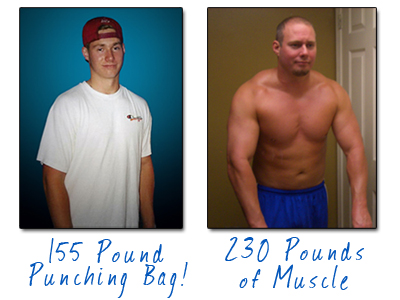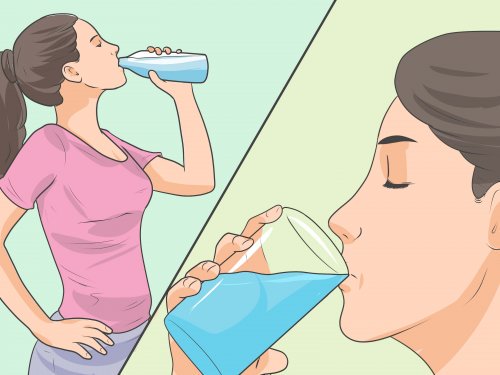The Squat
implementation and technique tips
The Squat, also known as knee
flexion, is one of the most important fitness exercises. It is
the most effective exercise for both strength and muscle building. In
fact, everyone should incorporate the Squat into his or her training schedule. Unfortunately
the Squat is often skipped in the gym, where it is a tendency that the focus is
mainly on training the upper body. Also, many people do not know exactly
how to perform a good Squat. It is a technically difficult exercise; so
many people try to avoid doing it. Read on quickly to learn the good Squat
version and avoid injuries!
This secret has allowed serious bodybuilders to build muscle tissue and increase their energy during workouts, and get ripped faster. Click here to learn more.
Which muscles do you train with the Squat?
Before you decide
whether squats are useful for you, you obviously need to know which muscles you
train with. Squats are also called "the
mother of exercises" because they train many different muscles. That's why squats will almost always fit into your workout,
whatever your fitness goal. With squats
train the following muscles:
- The erector spinae (back muscles)
- The gluteus maximus (large gluteal muscle)
- The hamstrings
- The quadriceps
The erector
spinae (back muscles)
The erector spinae or
back stretcher is a group of
long back muscles that is important for stretching and bending the back (as the
name of this muscle group probably already suggested). When you do a squat, you contract these muscles when you go
up and when you go down. This means that
these back muscles are actually continuously busy during squatting.
Training your back
muscles is very important if you also want to train your abdominal muscles. If you train only your abdominal muscles, but not your back
muscles, you can, as it were, "bend" backwards in posture.
The gluteus
maximus (large gluteal muscle)
The squat is known as
an exercise with which you train your buttocks, and this is certainly
not a myth. Squatting is one of the best ways to
train the gluteus maximus. This is the largest of the three gluteals,
and also the muscle that largely determines the shape of the buttocks. If you
want to work on this, there is no better exercise than the squat.
Buttock muscles are
generally seen as attractive in both men and women. In women, they provide rounder, larger-looking buttocks,
which most men find very beautiful, but women can also particularly appreciate
a muscular buttocks in men.
The hamstrings
The hamstrings, also
called the “back thigh muscles”, is a collective name for the three
muscles that are located at the back of the upper leg. These muscles run from your buttocks to your lower leg. During squats you use
these muscles very intensively to keep your body up.
Hamstrings are often
seen as the measurement of how agile someone
is, and are important in activities such as football, running, cycling and
swimming. In addition, it is very important
to train these muscles if you also train the rest of the muscles in your body:
if you neglect your hamstrings, your legs will seem weird, small and out of
proportion to the rest of your body.
The quadriceps
The quadriceps, also
called the four-headed thigh muscle, is a muscle that sits at the front of your
thigh, just on the other side of the thigh than the hamstring. The function they perform at squats is very similar to the
function of the hamstrings, and so these muscles are also highly trained by
this exercise. The benefits of well-trained
quadriceps are very similar to those of hamstrings.
Other Benefits
of squats
Besides the fact that
squatting for many muscles is a very effective training method, the exercise
has even more advantages. I will briefly discuss two of
these benefits, namely:
- The production of testosterone and growth hormone
- Effective burning of body fat
The production
of testosterone and growth hormone
When you exercise, you
always make testosterone and growth hormone and insulin-like
growth factor 1. In people who squat, however, the
production of these substances appears to be a lot higher than with people who only do other exercises. This not only has a positive effect on the aforementioned
muscle groups, but on all of the muscle building in your body.
People with more
testosterone and growth hormone in their bodies can build muscle mass more
easily, so also in other places in your body you will find that by doing squats
you will suddenly become more muscular.
For the women who are
afraid that this will give them a very masculine figure; do not worry about this, because you need a lot more
testosterone than you could ever produce by way of squats.
Effective
burning of body fat
If you want a more
muscular look, it helps the visibility of your muscles enormously if you lose
some fat. Fortunately, squats are ideal
for burning body fat. During this
intensive exercise you burn a lot of calories.
Myths about Squats
The knees may not come directly above the toes
during the Squat
Many fitness instructors are
of the opinion that during the Squat “your
knees should never be positioned directly above your toes”. However, scientific evidence has never been provided
before. No research has shown that permanent damage occurs if your knees
exactly vertically above your toes. If you are forced to keep your toes
behind your knees, you will put extra strain on your hips and lower back, which
is not good.
In conclusion, we can say
that your knees may be slightly ahead of your toes. So make sure you have
a Squat where your movement is as natural as possible and (only when you really
need it) the knees are slightly ahead of your toes.
Squatting is bad for your knees
Unfortunately, it is
sometimes thought that strength
training is bad for your joints . The Squat would be too
high a load for your knee joint. But this is a myth. It is said that
the Squat is bad for your knees, however, a correct Squat version provides a
strengthening of the muscles around your knee. This makes your knee stronger
and more resilient in its entirety. For comparison; when running,
there is much more pressure on your knees than during Squatting. With a
Squat in correct shape, the power is divided over your leg muscles and hips.
Learning the correct Squat execution
Well, a Squat cannot harm
your knees. But how do you perform a perfect Squat now? Follow the
instructions below about your posture and you will soon notice that you are
making progress -
o
Head: When you are standing upright, you choose a point
right in front of you / something above you, here you keep watching during the
entire exercise.
o
Shoulders: By squeezing your shoulder blades together, you
will create a kind of ridge where the barbell / bar can stay on.
o
Chest: During the Squat you try to keep the chest as
upright as possible. As if you very confidently push your chest forward.
o
Hands: The position of your hands is important. Position
them so that you have enough control over the rod and at the same time your elbow
angle is sufficient to carry the barbell and the weight. Make sure that
you do not place your hands too far apart.
o
Abdominal and lower back muscles: Provide a neutral,
slightly concave, posture in your back. Keep on tightening your stomach
and lower back muscles.
o
Hips and Thighs: Move your hips backwards. "Sit" like you would in a chair. However, you do not sit completely on the ground, but you keep
squatting above the ground at the point where your thighs are about as
straight as the ground.
o
Knees: Make your knees bend straight down, do not allow
them to move too far inwards or outwards. It is important that you do
not let your knees protrude beyond your toes. If you do, you will have difficulty keeping your balance, and
you will train your muscles less effectively.
o
Feet: Put your feet down on shoulder width, or slightly
wider. Your toes point forwards or outwards by 30 degrees. During the
entire Squat your feet stay flat on the ground to maintain sufficient
stability.
Variants of the Squat
By experimenting with your
posture with the Squat you can put more emphasis on certain muscles. The
Quadriceps in any case with every Squat variant fully participate.
o
Deeper = More activity in Gluteus and Hamstrings
o
Broader = More activity in Gluteus and Adductors
Sumo Squat ; Feet wide and outward. Less heavy for the lower
back, but due to the lack of depth, less activity in the hamstrings.
Front Squat ; Place the rod on the front of your shoulders. For
athletes with a vulnerable knee joint or limited flexibility in the shoulders,
the front squat may be better suited than the back squat. But it
does not matter for your legs.
Overhead Squat ; Hold the rod over your head. This is a slightly more
difficult exercise and especially good for stability and flexibility.
Half Squat ; Stay slightly above parallel (90 degrees). Focus
on the quads. Less effective than the Full Squat version.
I would recommend adding Muscle Advance Creatine Supplement to your routine, you’ll be maximizing your workout’s muscle building potential.Click here to learn more.



















